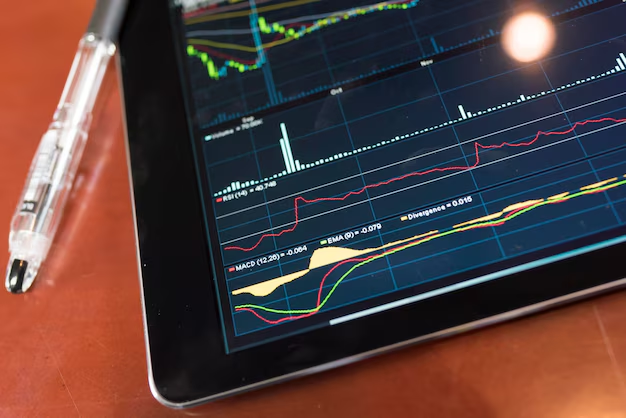How to Buy ETFs: A Comprehensive Guide to Exchange-Traded Funds
Exchange-Traded Funds, or ETFs, have become a popular investment vehicle for both novice and seasoned investors. They offer a convenient way to gain exposure to a diverse range of asset classes without the need to pick individual stocks or bonds. But how exactly can you buy ETFs? Let’s dive into the essentials, demystify the process, and explore related aspects of investing in ETFs.
📈 What are ETFs and Why Should You Consider Them?
ETFs are investment funds traded on stock exchanges, much like stocks. They hold assets such as stocks, commodities, or bonds and typically operate with an arbitrage mechanism designed to keep trading close to its net asset value, while still retaining the flexibility of trading throughout the day.
Advantages of ETFs
Diversification: ETFs often offer exposure to a wide range of securities, providing built-in diversification that reduces risk.
Cost-Effectiveness: Generally, ETFs have lower expense ratios compared to mutual funds.
Liquidity: As they are traded on exchanges, ETFs can be bought and sold just like stocks during market hours.
Transparency: ETF holdings are published daily, allowing investors to see exactly what they own.
Flexibility: With ETFs, you can invest in a broad market index or target specific sectors, commodities, or countries.
Potential Drawbacks
- Brokerage Fees: Buying and selling ETFs will incur brokerage fees, depending on your platform.
- Volatility: As with all investments, ETFs can be volatile, especially those focusing on niche sectors or emerging markets.
🛒 Steps to Buying an ETF
Buying an ETF is much like buying a stock. Here’s how you can get started:
1. Open a Brokerage Account
To buy ETFs, you’ll first need a brokerage account. Here's what to consider:
Platform Choice: Look for platforms with intuitive interfaces, robust research tools, and low transaction fees.
Account Types: Choose between standard brokerage accounts or tax-advantaged accounts like IRAs based on your investment goals.
Funding Your Account: Once you’ve set up your account, the next step is to fund it. Decide whether you'll be making a lump sum deposit or setting up regular contributions.
2. Research and Select the Right ETF
Choosing the right ETF calls for some research into the following areas:
Index or Sector: Decide whether you want to invest broadly or focus on a specific sector.
Expense Ratio: Check the annual fee associated with the ETF, which is crucial for long-term investments.
Performance History: While past performance isn’t indicative of future results, historical data can provide insights into volatility and growth potential.
Liquidity and Volume: Ensure the ETF you select is actively traded to avoid issues with buying or selling.
3. Place Your Order
Once you've selected your ETF, it's time to place an order:
Order Type: Choose between a market order (buy at the current price) or a limit order (buy at a specified price).
Number of Shares: Decide how many shares to purchase based on your investment amount and the current price of the ETF.
4. Monitor Your Investment
After purchasing, it's essential to keep track of your ETF’s performance and any market conditions that might affect it.
📚 Exploring Deeper into ETF Types
ETFs come in various types and flavors, each designed to meet different investment strategies:
Equity ETFs
These track a particular index or sector of the stock market. Examples include S&P 500 ETFs or technology sector ETFs.
Bond ETFs
These consist of bonds and can be a mix of government, municipal, corporate, or international bonds.
Commodity ETFs
Invest directly in commodities like gold, oil, or agricultural products, providing exposure to different asset classes.
International ETFs
Provide exposure to foreign stocks or markets, diversifying currency and geopolitical risks.
Sector and Industry ETFs
Focus on specific sectors such as healthcare, technology, or energy, allowing targeted exposure to potential growth areas.
💡 Strategic Tips for Investing in ETFs
Investing in ETFs is strategic, here are some practical tips:
Understand Your Risk Tolerance: Determine how much risk you're willing to take and align your investments accordingly.
Regular Monitoring: Keep an eye on economic indicators and industry trends that could affect your ETFs.
Rebalancing Your Portfolio: Periodically review and adjust your portfolio to maintain your desired asset allocation.
Consider Tax Implications: Understand the tax treatment of dividends and capital gains associated with your ETF investments.
📝 Quick Summary for Buying ETFs
Steps to Buying ETFs:
- 📊 Research and Select: Determine what you're looking for—broad market exposure or sector-specific investments.
- 🏦 Open an Account: Choose a brokerage that fits your needs.
- 💵 Make the Purchase: Decide on the number of shares and place your order.
- 🔍 Monitor Continuously: Stay updated with market trends and your investment’s performance.
Wrap-Up Thought
Buying ETFs can be a versatile and rewarding way to build a diversified investment portfolio. With the right research and strategic approach, ETFs can provide opportunities for growth while allowing investors to manage risk effectively. Always ensure your investment decisions align with your long-term financial goals, and seek professional advice if needed.
By understanding the nuances of buying ETFs and keeping abreast of market trends, you can make informed decisions that bolster your financial journey. Investing wisely in ETFs could be a crucial step in securing your financial future.

Related Topics
- a Couple Won The Powerball. Investing It Turned Into Tragedy.
- a Few Consideration When Investing For Preferred Stock Equity
- a I Etf
- a Positive Return On Investment For Education Happens When
- a Positive Return On Investment For Higher Education _____.
- Are Annuities a Good Investment
- Are Annuities Good Investment
- Are Annuities Good Investments
- Are Automatic Investments a Money Skill
- Are Bonds a Good Investment